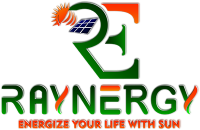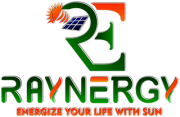Home / Why Solar
Why Solar
History of Solar
- Though solar power has been around since the 1960s, thanks to the implementation of the renewable energy target, it was in the early 2000s that the industry began in Australia.
- Solar has expanded across the nation since then, becoming popular with households looking to reduce their electricity costs, power their homes with renewable, inexpensive energy, and gain more independence from energy.
- Today, more than 2 million households fuel their homes with solar power.
How can you benefit from Solar?
It’s easy to see why so many Australians have already chosen to go with solar.
Reduced electricity bills
When you have solar, you’re generating your own energy instead of buying it from the grid, which can mean smaller energy bills and big savings.
Low maintenance
Once your system is installed, it doesn’t take much to ensure your solar panels are always working at their full potential.
Reduced emissions
Renewable energy sources like solar can reduce your home’s greenhouse gas emissions and help the environment.
Feed-in tariffs and rebates
When your solar panels generate more electricity than you need, you can send it to the power grid and may get a credit on your bill in the form of a feed-in tariff.
Any disadvantages?
Solar energy offers a lot of potential, but a downside is it only generates power when the sun is out. To help make the most of the power you generate, a battery can allow you to store excess energy you produce, so you can use it later in the day.
How it's work
How Solar Power Work?
Solar panels generate DC power
During the day when the sun is out, solar panels convert UV light into DC electricity. They’re able to do this, because they’re made from silicone, a material that produces electricity when light falls onto it.
Solar inverter converts DC power to AC
This DC electricity is then converted by a solar inverter into AC power (alternating current). This is the type of electricity that is used by appliances in your home. When buying a system, you can either choose between a string inverter, which is a central inverter that is located close to your switchboard, or a micro inverter which is a small inverter installed underneath each solar panel.
AC power flows through the switchboard and is used by your appliances
Once the electricity is converted into AC power, any appliances that are running in your home, use this electricity instead of purchasing power from the grid. This means you don’t need to purchase as much electricity from your electricity retailer, saving you money.
Excess electricity is sent to the grid or a battery
Any electricity generated by your solar panels that isn’t used by your home, is either sent to the grid, where in return you get paid a feed-in tariff from your electricity retailer; or is used to charge a battery.
A smart meter tracks and records all energy flows.
A smart meter tracks and records the energy flows in this whole process, so there’s nothing extra you need to do. Each time you receive your electricity bill, you’ll automatically see the reduction in your electricity bill and the feed-in tariff credits. You can also automatically draw energy from the grid, when you need to.

